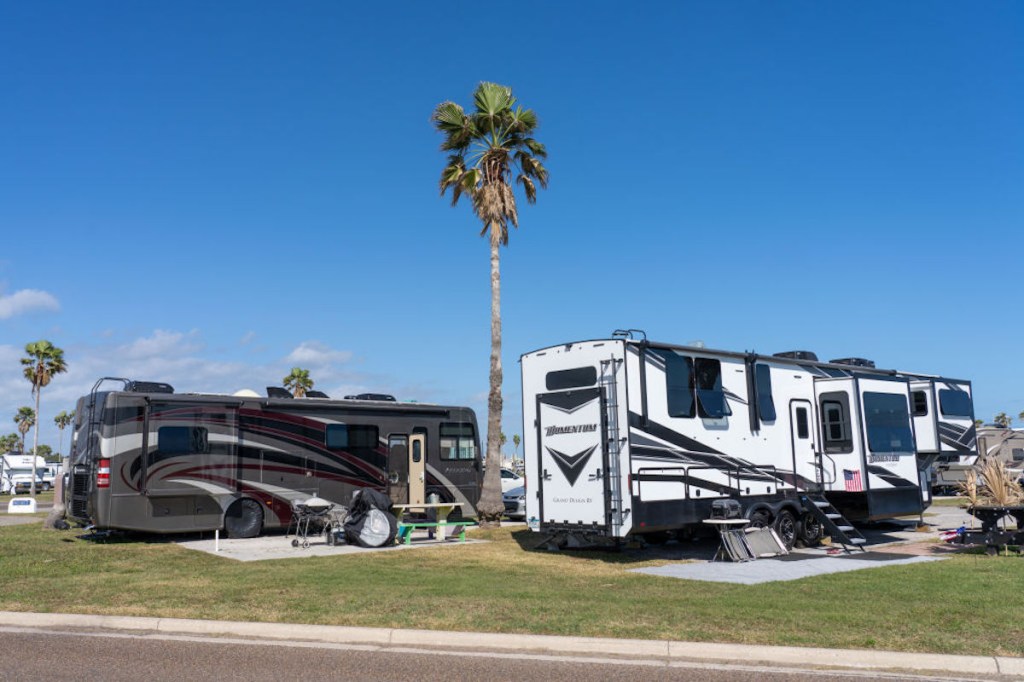
Yes, There Is a Universal Toll Pass for RVs but Does It Work?
Toll roads seem to be everywhere, but that’s just one problem they pose for RV travel. Many now or will be, automated. With everything we hear about technology and convenience, wouldn’t it be great if there were a single universal transponder that could be used across the country? There is, at least for RVs.
Where does the toll pass work?

Called the RV Toll Pass by TransCore. The company says that it works on “97% of major toll roads in the U.S.” But does it? We haven’t tried using one. And by the way, we’re not affiliated with the maker, nor do we receive compensation for posts like this one.
Their advantages are clear, with the biggest being not having to sort through and carry several of the devices. But they also tabulate your toll as you travel, without the need to stop at booths with their inherent traffic jams. And electronic tolls, in many cases, can be less than the price charged for cash transactions.
How do you know which states the toll pass works in?

But looking at the reviews on Amazon, most praise the devices. Most of the negative reviews deal with the amount of the charges themselves. Especially if you travel often through Florida, it’s worth considering. Florida has the most tolls in the country and by a wide margin.
Other states with their fair share of toll roads are Texas, Ohio, California, New York, and New Jersey. California, in particular, has some of the most expensive tolls. However, its toll roads are mostly in Los Angeles and San Francisco, so now you know. The RV Toll Pass also comes with a sheet listing which states it works for and which specific bridges or roads it doesn’t.
Are there downsides to using it?

But there are some downsides to the RV Toll Pass. First, the upfront cost is around $100, and you must maintain a minimum of $50 in your account. Accounts are located online, including initial activation. Then, each month you use it you pay$14.95 for that month only. Months you don’t use it there is no charge.
Both a battery-powered version that sticks to the windshield, and one tied into your RVs electrical system are available. The battery-powered version has a five-year warranty, and the one powered by your RV’s electrical can be hidden.
Debuting in 2019, with four years under its belt, it evidently has proven to be popular. A quick glance at it on Amazon shows it is currently unavailable. With the summer closing in many are preparing for treks around the country for cross-country excursions. As RVs are about open roads and convenience, these transponders blend those two pursuits together perfectly.




